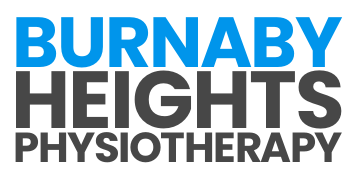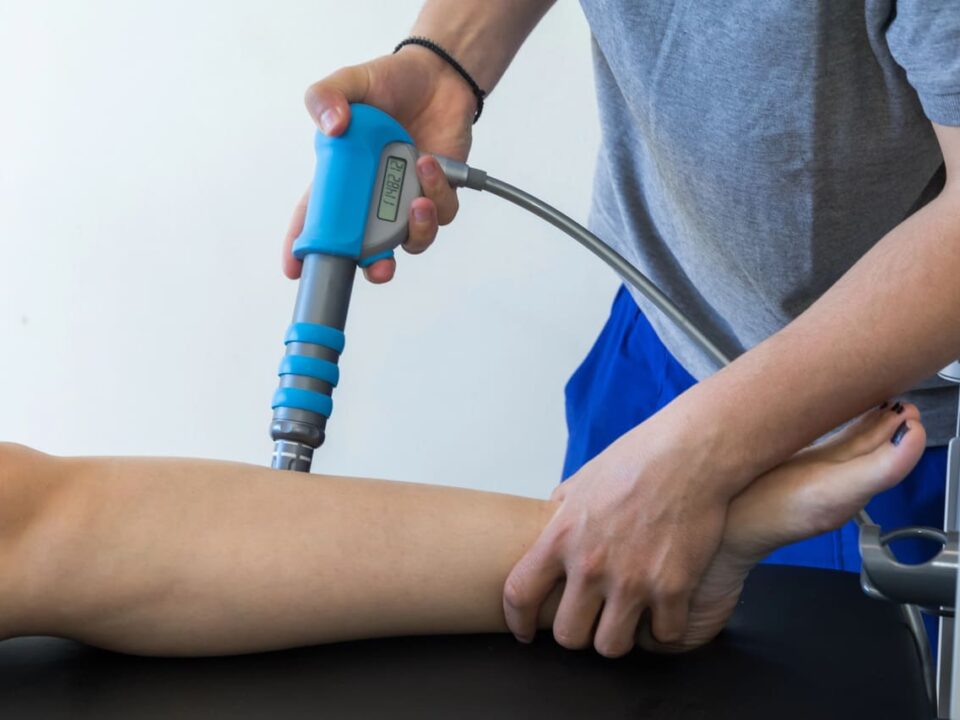
Overcoming Frozen Shoulder: Physiotherapy Techniques and Exercises
August 20, 2024
Relieve Pain and Prevent Injury: The Key Benefits of Physiotherapy
September 20, 2024Tennis elbow is a common condition that causes pain and discomfort around the outside of the elbow. Despite its name, tennis elbow isn’t limited to athletes; it can affect anyone who performs repetitive motions involving the forearm and wrist. If left untreated, tennis elbow can lead to chronic pain and decreased arm function, significantly impacting daily activities. Fortunately, physiotherapy offers a non-invasive approach to treating tennis elbow. In this blog post, we’ll explore what tennis elbow is, how physiotherapy can help, and the techniques commonly used in treatment.
Understanding Tennis Elbow
Tennis elbow, also known as lateral epicondylitis, is a condition that causes pain and inflammation on the outer part of the elbow. This pain originates from the tendons that attach the forearm muscles to the bony prominence of the elbow, known as the lateral epicondyle. The condition occurs when these tendons become overworked, often due to repetitive motions that involve the forearm and wrist. Over time, this repetitive strain can lead to small tears in the tendon tissue, causing pain and discomfort.
Despite its name, tennis elbow is not exclusive to tennis players. It can affect anyone who engages in activities that require repetitive wrist and arm movements, such as painting, typing, or using hand tools. The pain associated with tennis elbow typically starts as a mild discomfort and can gradually worsen, especially with continued activity. Common symptoms include a burning sensation or pain on the outer part of the elbow, difficulty with grip strength, and increased pain during forearm activities like lifting, gripping, or twisting.
How Can Physiotherapy Help in Treating Tennis Elbow?
Physiotherapy is a cornerstone in the treatment of tennis elbow, offering a comprehensive approach that addresses the root cause of the condition and promotes healing. Here’s how physiotherapy can help:
- Pain Relief: One of the primary goals of physiotherapy is to reduce pain and inflammation in the affected area. Physiotherapists use various techniques, such as manual therapy, soft tissue massage, and modalities like ice or heat therapy, to alleviate discomfort and improve circulation to the injured tendons.
- Promoting Tendon Healing: Physiotherapy helps stimulate the healing process by encouraging the repair of damaged tendon tissue. Techniques such as eccentric exercises (which involve lengthening the muscle while it is under tension) and shockwave therapy can promote collagen production and improve tendon resilience.
- Improving Strength and Flexibility: Strengthening the forearm muscles and improving flexibility are crucial in preventing further strain on the tendons. Physiotherapists design personalized exercise programs that focus on building strength in the forearm, wrist, and hand muscles, as well as enhancing the flexibility of the surrounding tissues.
- Correcting Biomechanics: Poor biomechanics, such as improper technique during sports or work-related activities, can contribute to the development of tennis elbow. Physiotherapy includes a biomechanical assessment to identify and correct any issues with movement patterns, posture, or muscle imbalances that may be exacerbating the condition.
- Preventing Recurrence: Beyond treating the immediate symptoms, physiotherapy also focuses on preventing recurrence. Clients receive education on proper techniques, ergonomic adjustments, and preventive exercises that can help avoid future episodes of tennis elbow.
By addressing both the symptoms and underlying causes of tennis elbow, physiotherapy provides a holistic approach to recovery that supports long-term elbow health.
Physiotherapy Techniques for Tennis Elbow
Several physiotherapy techniques are commonly used to treat tennis elbow, each targeting different aspects of the condition to promote recovery and restore function:
- Manual Therapy: Manual therapy involves hands-on techniques such as deep tissue massage, joint mobilization, and myofascial release. These techniques help reduce muscle tension, improve blood flow, and decrease pain in the affected area.
- Eccentric Exercises: Eccentric exercises are a key component of tennis elbow rehabilitation. These exercises focus on strengthening the extensor muscles of the forearm by slowly lengthening the muscles under tension. This type of exercise has been shown to be particularly effective in promoting tendon healing and reducing pain.
- Shockwave Therapy: Shockwave therapy is a non-invasive treatment that uses high-energy sound waves to stimulate healing in the damaged tendons. This therapy helps break down scar tissue, increase blood flow, and promote the regeneration of healthy tendon tissue, making it an effective option for treating chronic tennis elbow.
- Stretching and Strengthening Exercises: A combination of stretching and strengthening exercises is used to improve flexibility and build strength in the muscles and tendons around the elbow. These exercises help restore normal function and reduce the risk of re-injury.
- Acupuncture: Acupuncture may be used as an adjunct therapy for tennis elbow. This technique involves inserting thin needles into specific points on the body to relieve pain, reduce inflammation, and promote healing.
These physiotherapy techniques are often used in combination to provide a comprehensive treatment plan tailored to the individual’s needs, ensuring effective relief from tennis elbow symptoms.
Recommended Exercises for Tennis Elbow Rehabilitation
Exercise plays a crucial role in the rehabilitation of tennis elbow, helping to strengthen the muscles, improve flexibility, and promote tendon healing. Here are some exercises commonly recommended by physiotherapists for tennis elbow rehabilitation:
- Wrist Extensor Stretch: Extend your arm in front of you with the palm facing down. Use your other hand to gently press the back of your extended hand towards the floor until you feel a stretch in your forearm. Hold the stretch for 15-30 seconds and repeat 2-3 times. This stretch targets the muscles involved in tennis elbow and helps reduce tension.
- Eccentric Wrist Extension: Sit with your forearm resting on a table and your hand hanging off the edge, palm facing down. Hold a light dumbbell and slowly lower the weight by extending your wrist. Use your other hand to lift the weight back to the starting position. Perform 10-15 repetitions. This exercise strengthens the wrist extensor muscles, which are often affected by tennis elbow.
- Towel Twist: Roll a towel and hold it with both hands in front of you. Twist the towel in opposite directions, as if wringing out water. Alternate directions and perform 10-15 repetitions. This exercise helps strengthen the forearm muscles and improve grip strength.
- Finger Extensions: Place a rubber band around your fingers and thumb. Slowly open your fingers against the resistance of the band, then close them back together. Perform 10-15 repetitions. This exercise strengthens the muscles that support the elbow and reduces strain on the tendons.
- Supination and Pronation: Hold a light dumbbell or a hammer with your elbow bent at 90 degrees and your forearm parallel to the floor. Slowly rotate your forearm so that your palm faces up (supination), then rotate it back so that your palm faces down (pronation). Perform 10-15 repetitions in each direction. This exercise helps improve the range of motion and strengthens the muscles involved in rotating the forearm.
These exercises should be performed regularly, as advised by your physiotherapist, to ensure effective rehabilitation and prevent the recurrence of tennis elbow.
How Often Should I Attend Physiotherapy Sessions for Tennis Elbow?
The frequency of physiotherapy sessions for tennis elbow depends on the severity of your condition and how well you’re responding to treatment. Typically, in the initial phase of treatment, you may need to attend physiotherapy sessions 1 to 2 times per week. During these sessions, the focus is on pain management, reducing inflammation, and initiating gentle exercises to promote healing.
As you progress and your symptoms begin to improve, the frequency of sessions may decrease to once a week or even less. The physiotherapist will continue to guide you through more advanced exercises and techniques to strengthen the affected muscles and restore full function to your elbow.
In addition to in-clinic sessions, your physiotherapist will likely provide you with a home exercise program. Adhering to this program is crucial for achieving the best results, as it ensures continuous progress between your physiotherapy visits.
The exact frequency and duration of physiotherapy sessions will be tailored to your specific needs and recovery goals, with adjustments made as you progress.
Lifestyle Changes to Support Recovery from Tennis Elbow
In addition to physiotherapy, certain lifestyle changes can support your recovery from tennis elbow and help prevent the condition from recurring. Here are some adjustments to consider:
- Modify Activities: Reduce or temporarily avoid activities that exacerbate your symptoms, such as repetitive wrist or arm movements. This might include taking a break from sports, avoiding heavy lifting, or modifying your work tasks to reduce strain on your elbow.
- Ergonomic Adjustments: Assess your workspace and make ergonomic adjustments to minimize stress on your elbow. Ensure that your desk, chair, and computer setup allow for a neutral wrist position. Consider using an ergonomic keyboard and mouse to reduce strain on the forearm and elbow.
- Use Supportive Equipment: Wearing a brace or elbow strap can provide support to the affected tendons during activities. This can help reduce pain and prevent further injury by distributing the load away from the damaged area.
- Practice Good Posture: Maintaining good posture throughout the day can reduce unnecessary strain on your elbow. Keep your shoulders relaxed and avoid slouching, especially when sitting at a desk or using a computer.
- Regular Stretching: Incorporate regular stretching into your daily routine to maintain flexibility in the forearm and wrist muscles. Stretching helps reduce muscle tension and prevents the buildup of tightness that can lead to tennis elbow.
- Strengthen Your Core and Upper Body: Building strength in your core, shoulders, and upper back can help support proper arm mechanics and reduce the risk of overloading the elbow. Engage in exercises that target these areas to provide better overall stability.
By making these lifestyle changes, you can complement your physiotherapy treatment and support a quicker, more effective recovery from tennis elbow.
Regain Optimal Mobility and Comfort
Tennis elbow can be a painful and limiting condition, but with the right approach to physiotherapy, recovery is within reach. Understanding the benefits of physiotherapy, the techniques used in treatment, and what to expect during sessions can help you take an active role in your recovery and regain full function of your elbow.If you’re dealing with tennis elbow and looking for effective treatment options, Burnaby Heights Physiotherapy is here to help. Our experienced physiotherapists offer effective treatment for tennis elbow and are committed to providing personalized care that supports your recovery and long-term health. Contact us today to schedule your appointment and take the first steps towards recovery!






